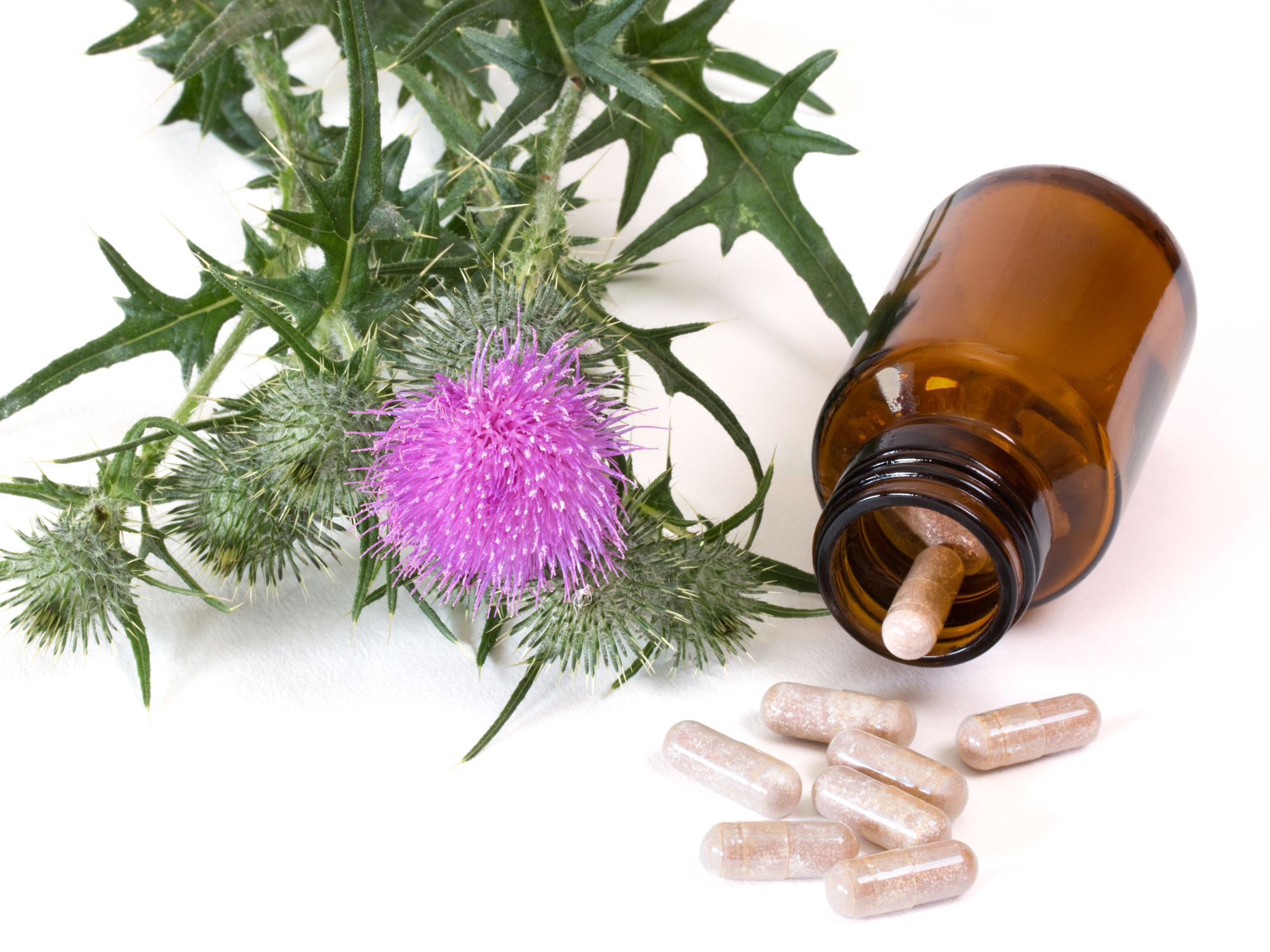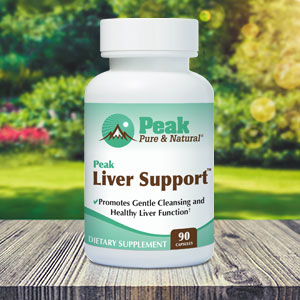Get Easy Health Digest™ in your inbox and don’t miss a thing when you subscribe today. Plus, get the free bonus report, Mother Nature’s Tips, Tricks and Remedies for Cholesterol, Blood Pressure & Blood Sugar as my way of saying welcome to the community!
Milking the many benefits of milk thistle

Foraging for wild edible mushrooms is a delicious hobby… but it’s also a dangerous one.
Just ask the 14 people who were poisoned this past winter in California after mistaking one of the world’s most poisonous mushrooms — the death cap mushroom — for something innocent and edible.
Luckily, no one died. But three people did need liver transplants, and an 18-month old girl was left with permanent neurological damage.
Right now, all doctors can do to help people who have mistakenly consumed the dangerous death cap is pump them full of intravenous fluids that will hopefully flush the poison out of their bodies. In some cases it works, but other times the liver just can’t handle the heavy load of poison it’s been dealt.
But there’s hope on the horizon…
Scientists are looking at a popular herbal remedy as a possible antidote to the death cap… milk thistle. Now, if you know anything about milk thistle, you know exactly why it has the potential to help people with mushroom poisoning…
It offers powerful support to the exact organ poisonous mushrooms attack hardest — the liver.
Uncontrolled observational studies show that a compound in milk thistle known as silibinin reduces the risk of death for people who’ve eaten the death cap. And now researchers are conducting a clinical trial to see if silibinin could act as an antidote to the death cap.
Of course, you don’t need to bite into a death cap to benefit from this amazing herb. Milk thistle has a lot of potential uses that could leave a positive mark on your health, including:
Cancer fighting
Several studies show that the same compound in milk thistle that purifies the liver — silibinin — also kills cancer cells. Its cancer-fighting power extends to tongue, skin, bladder, colon and small intestine cells. These studies were performed on cells in a Petri dish or animals, but hopefully, clinical trials on how silibinin impacts cancer in humans aren’t far off. There have already been a few small clinical trials showing that silibinin can help reduce the side effects associated with cancer treatment. So keep your fingers crossed for more research on this cancer-fighting herb, especially in light of the recent news about chemotherapy promoting metastasis in breast cancer patients. In the meantime, it wouldn’t hurt to add a small daily dose of milk thistle to your cancer prevention plan.
Blood sugar balancing
Milk thistle’s miracle compound (silibinin) is an active component of silymarin, a powerful antioxidant. For a long time, antioxidants have been studied for their effect on blood sugar and diabetes, and the results have been promising. In 2006, for example, a study demonstrated that 200 mg of silymarin three times daily significantly lowered blood sugar and glycosylated hemoglobin (a test that shows what a person’s blood sugar’s been like for the past 2 to 3 months) in people with type II diabetes.
Anti-aging
Because milk thistle contains the powerful antioxidant silymarin, it fights off the free radicals that contribute to aging. Not only does silymarin help keep your organs young (especially your liver), but it could also fight the external signs of aging. A 2007 study in mice found that a topical silymarin treatment prevents oxidative stress to the skin caused by UV rays from the sun…the kind that causes premature skin aging.
Brain health
The beneficial compounds in milk thistle — silibinin and silymarin — have also been shown to protect against neurodegenerative diseases. In fact, preliminary research shows that these compounds are beneficial for people with multiple sclerosis (MS), Parkinson’s disease and Alzheimer’s disease.
Everyday liver support
I know I already mentioned that milk thistle offers fantastic liver support. But it bears repeating…milk thistle is the best remedy for an overburdened liver. And it’s not just great for serious liver problems like mushroom poisoning. It’s also great for times when you’ve had one too many cocktails, when your liver’s sluggish due to prescription medications or if you’ve been eating a lot of junk food. Heck, if it can help people with cirrhosis, liver disease and hepatitis (which it’s been shown to do in several studies), it can handle a few too many glasses of wine and a big mac too.
Tips for taking milk thistle
If you want to experience the benefits of milk thistle for yourself, you’re in luck…
It’s available in tinctures, tablets, soft gels, liquids and capsules at many health food stores. Just steer clear of milk thistle tea. It only contains a small dose of the beneficial compound silymarin, which doesn’t dissolve well in water anyway.
Your best bet is to find a supplement that contains 70 percent to 80 percent silymarin as its active ingredient. Once you get your hands on a high-quality supplement, you can take anywhere between 300 mg and 900 mg per day. Although people who are using it to treat liver issues can take as much as 400 to 600 mg three times per day. Side effects are rare, but it could cause diarrhea. Make sure to check with a trusted health care professional if you’re on any medications before you start taking it.
Editor’s note: Are you feeling unusually tired? You may think this is normal aging, but the problem could be your master hormone. When it’s not working, your risk of age-related diseases skyrockets. To reset what many call “the trigger for all disease” and live better, longer, click here to discover The Insulin Factor: How to Repair Your Body’s Master Controller and Conquer Chronic Disease!
Sources:
-
“The world’s most dangerous mushroom and what it did to an 18-month-old girl.” — The Washington Post. Retrieved June 9, 2017.
-
“Amanita phalloides Mushroom Poisonings — Northern California, December 2016.” — Centers for Disease Control and Prevention. Retrieved June 9, 2017.
-
“Milk Thistle (PDQ®)–Patient Version.” — National Cancer Institute. Retrieved June 9, 2017.
-
“Herbal Medicine Silymarin May Help Sugar-control In People With Type II Diabetes.” — ScienceDaily. Retrieved June 9, 2017.
-
K. Katiyar, et al. “Silymarin, a Flavonoid from Milk Thistle (Silybum marianum L.), Inhibits UV-induced Oxidative Stress Through Targeting Infiltrating CD11b+ Cells in Mouse Skin.” — Photochemistry Photobiology. 2008; 84(2): 266–271.
-
“Milk thistle (Silybum marianum).” — Mayo Clinic. Retrieved June 9, 2017.
-
“Milk Thistle.” — Whole Health Chicago. Retrieved June 9, 2017.













